Non-humanized antibodies, like mouse monoclonal antibodies, can trigger strong immune responses in the body, such as the human anti-mouse antibody (HAMA) response. This limits their clinical applications. To overcome this issue, genetic engineering can be used to humanize these antibodies, making them more similar to naturally occurring human antibodies. This humanization significantly improves their tolerability in the human body.
Sino Biological offers monoclonal antibody humanization services that achieve a success rate of over 95%. They utilize complementarity-determining region (CDR) grafting technology and computer-aided molecular modeling to make non-human antibodies more compatible with the human immune system. This process enhances the safety and effectiveness of these antibodies for various medical and research purposes.
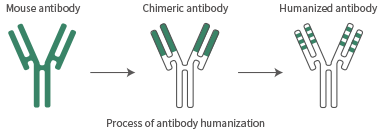
Image Credit: Sino Biological Inc.
Service highlights
- 100% success rate
- The sequence homology is greater than 95%; PTM and aggregation prediction reports are also available
- As fast as 3–4 weeks to provide desired humanized antibodies
- Affinity validated by ELISA and SPR/BLI
Service details for antibody humanization
Timeline: 3-4 weeks
Affinity validation
- Antibody/antigen affinity validation
Preparation of chimeric antibody
- Transient expression and purification in HEK293 cells
- Detection of chimeric antibody-antigen interaction
Preparation of humanized variants
- 3D structural modeling of antibodies
- Vector construction and plasmid preparation
- Back mutation
- SDS-PAGE and UV analysis
- Transient transfection of HEK293 cells and purification
- Affinity detection: ELISA, Biacore and Octet
Deliverables
- Top three humanized antibodies, 0.2~0.5 mg per strain (at least 1 humanized ab has a comparable affinity with parental ab)
- H and L chains in separate expression vectors
- Antibody sequences
- CoA
- Remaining antigens
- PTM and aggregation prediction report (optional)
Customers provide
- Sequences of the parental antibodies
- Protein antigens: purity>90%, concentration >1 mg/mL, and PBS formulation
Service process

Image Credit: Sino Biological Inc.
Featured case study of antibody humanization service
Mouse mAb humanization
The figure below demonstrates that the humanized antibody maintains a similar level of affinity when compared to the parental antibody.

Affinity of antibody before and after humanization. Image Credit: Sino Biological Inc.
Nanobody humanization
Following humanization, the humanized nanobody maintains a similar level of affinity when compared to the parental nanobody.
Affinity kinetic analysis
Source: Sino Biological Inc.
| Sample |
KD(M) |
Kon(1/Ms) |
Koff(1/s) |
| Parental VHH |
1.04E-08 |
1.33E+05 |
0.001379 |
| Humanized VHH 1 |
9.72E-09 |
1.14E+05 |
0.001104 |
| Humanized VHH 2 |
8.30E-09 |
1.29E+05 |
0.001072 |
| Humanized VHH 3 |
9.26E-09 |
1.05E+05 |
0.000972 |
Parental VHH
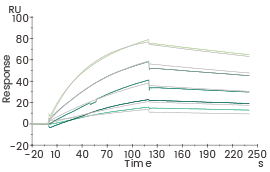
Affinity kinetic analysis of Parental VHH (Biacore). Image Credit: Sino Biological Inc.
Humanized VHH 1
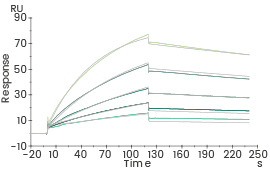
Affinity kinetic analysis of Humanized VHH 1 (Biacore). Image Credit: Sino Biological Inc.
Humanized VHH 2
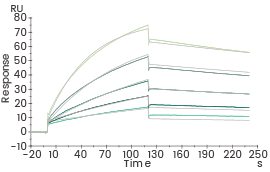
Affinity kinetic analysis of Humanized VHH 2 (Biacore). Image Credit: Sino Biological Inc.
Humanized VHH 3
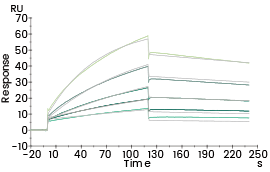
Affinity kinetic analysis of Humanized VHH 3 (Biacore). Image Credit: Sino Biological Inc.
More Featured Antibody Services
High-throughput Antibody Production Service
Phospho-specific Antibody Service
Anti-idiotype Antibody Production Service